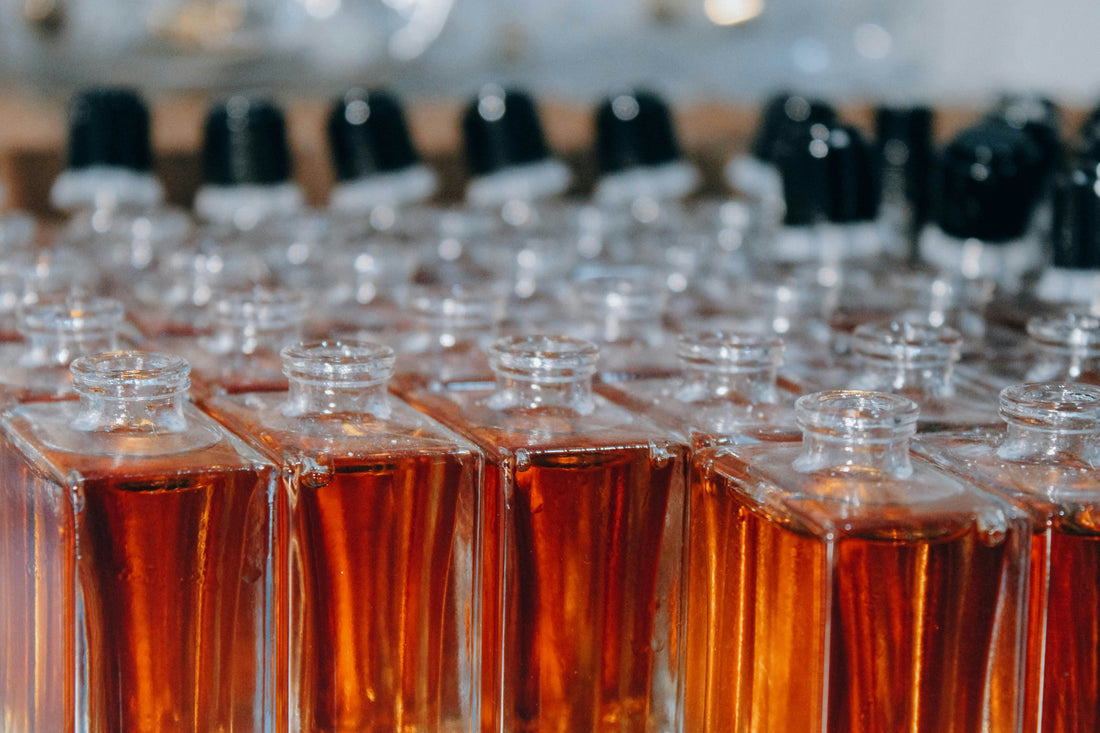
Fake Scents, Real Consequences: The Hidden Dangers of Counterfeit Fragrances
The Illusion of Luxury
In an age where social media makes everything look attainable, counterfeit perfumes have quietly flooded the market — from street stalls to online listings that promise “the same scent” as your favourite designer fragrance for a fraction of the price.
But behind the glossy packaging and familiar names lies a disturbing reality: fake perfumes aren’t just illegal — they’re dangerous. They often contain industrial-grade alcohols, toxic solvents, and untested chemicals that pose real risks to your skin, your health, and the environment.
1. What’s Really in a Counterfeit Perfume Bottle
Authentic perfumers use cosmetic-grade ethanol, purified water, and carefully tested aroma compounds. Counterfeiters, on the other hand, cut corners at every stage — replacing safe, regulated ingredients with industrial alcohols, antifreeze agents, and synthetic dyes never meant for skin contact.
Laboratory investigations by regulatory agencies have found fakes contaminated with:
-
Methanol – a toxic alcohol used in fuel and cleaning products that can cause dizziness, nausea, and even blindness in severe cases.
-
Ethylene glycol – a compound found in antifreeze, known to irritate the skin and respiratory tract.
-
Heavy metals such as lead and arsenic from unregulated manufacturing conditions.
When sprayed directly onto your skin, these chemicals can cause rashes, burns, or allergic reactions. And when inhaled, they can trigger respiratory distress, headaches, and long-term toxicity.
2. The Hidden Health Risks You Can’t See (or Smell)
Fake fragrances aren’t tested for safety, stability, or hygiene. Many are produced in unsanitary factories, where contamination from bacteria or mold is common.
Because these perfumes lack proper preservation systems, they can degrade quickly, releasing volatile organic compounds (VOCs) that affect air quality and trigger asthma or migraines.
In short: what you spray on your skin and breathe into your lungs is a chemical mystery — one that could have lasting consequences.
3. How Counterfeits Harm More Than Just the Buyer
Beyond personal health risks, counterfeit perfumes have a devastating environmental and ethical impact. These products often come from illegal, unregulated facilities that exploit labor, pollute waterways, and use non-biodegradable plastics for packaging.
Every fake fragrance sold supports a shadow industry that thrives on deception and environmental neglect — the complete opposite of what beauty should represent.
4. How to Spot (and Stop) a Fake
Protect yourself with a few simple steps:
✅ Buy only from authorised retailers or official brand websites.
✅ Check packaging details – authentic fragrances have precision printing, batch codes, and tamper seals.
✅ Beware of deep discounts – if it sounds too good to be true, it probably is.
✅ Look for transparency – trustworthy brands like True Born list ingredients and ethical sourcing practices openly.
5. The True Born Philosophy: Integrity in Every Drop
At True Born, every fragrance is a statement of purity, craftsmanship, and conscience. We believe that true luxury is not about imitation but about intention — using safe, high-quality ingredients that respect both skin and planet.
Our perfumes are free from industrial alcohols, phthalates, parabens, and toxins, and are crafted in small batches with full transparency. Because you deserve more than imitation — you deserve honesty.
A Final Thought
Fake perfumes may mimic the scent of luxury, but they lack its soul — and its safety.
Choosing authentic, transparent brands isn’t just about smelling beautiful; it’s about protecting your health, your environment, and your values.
At True Born, we create fragrance with nothing to hide — only purity, artistry, and truth.
